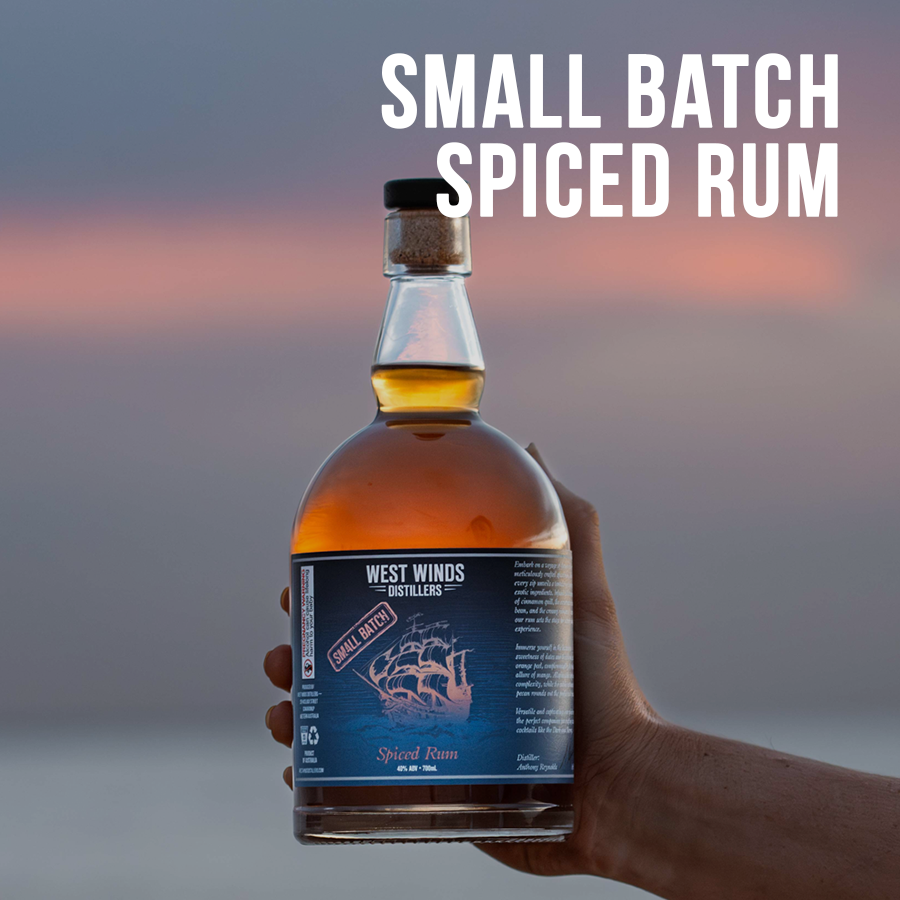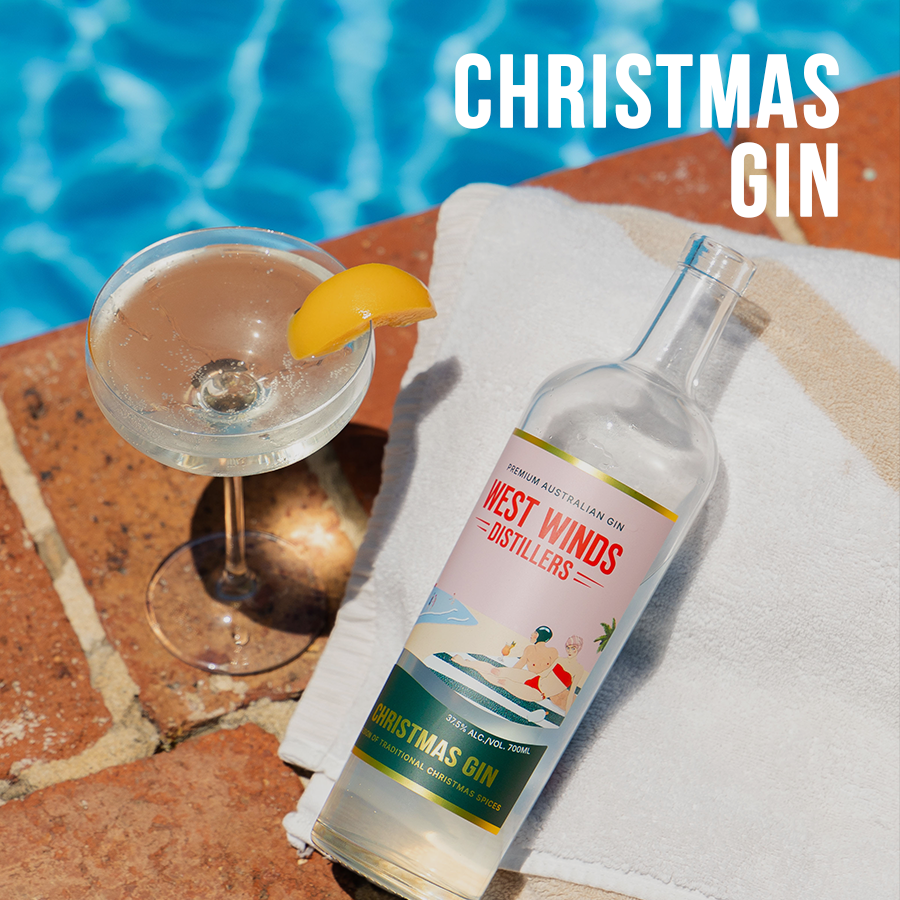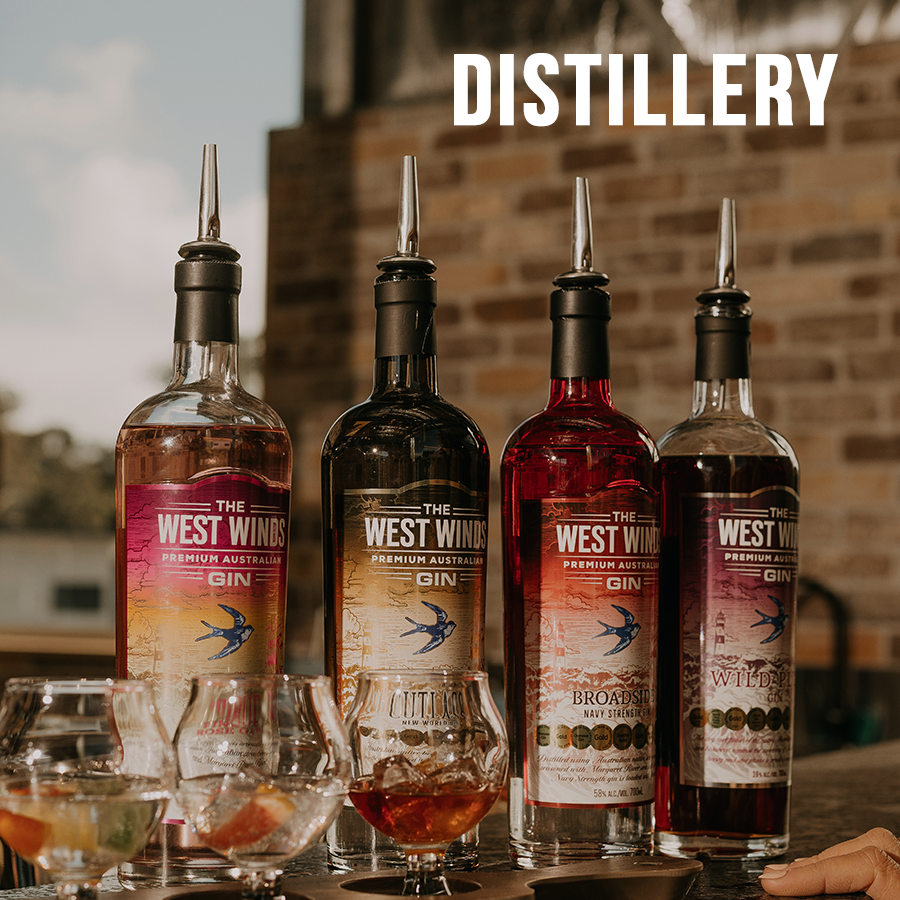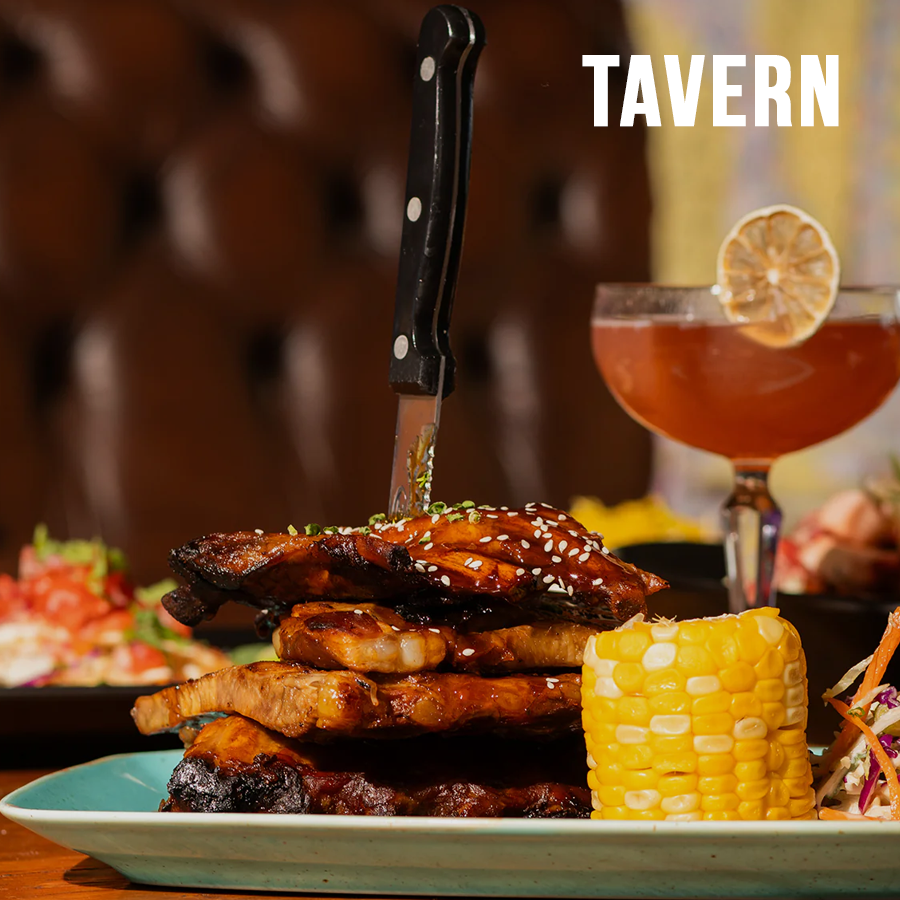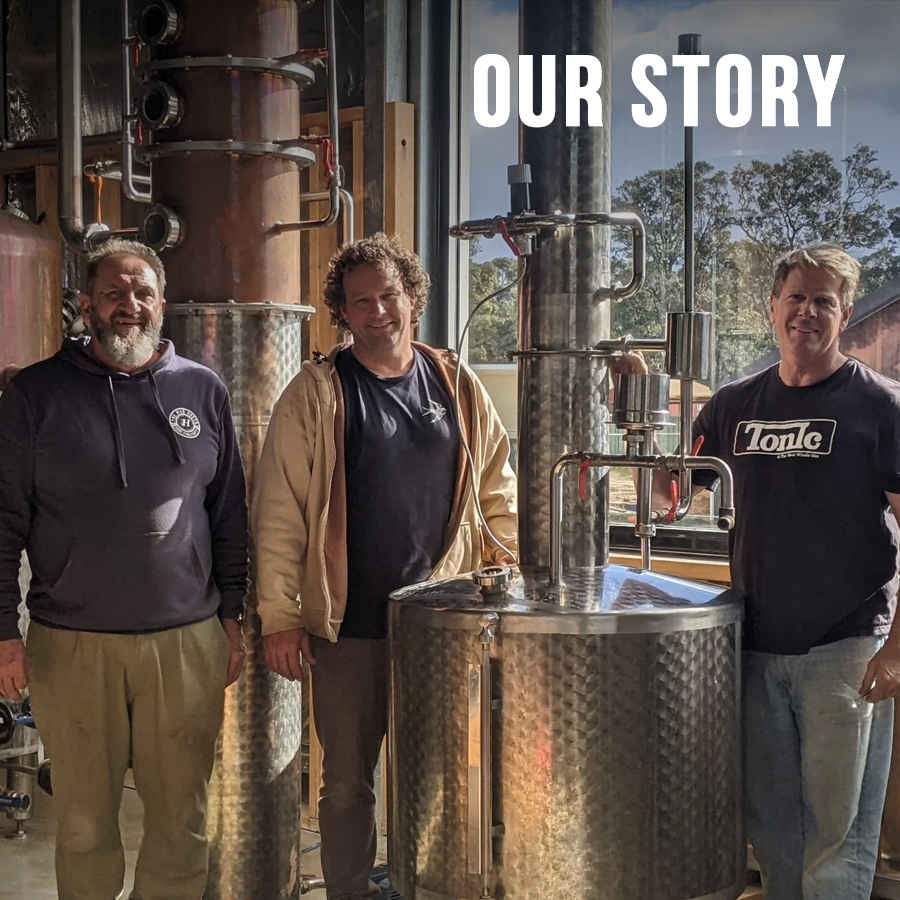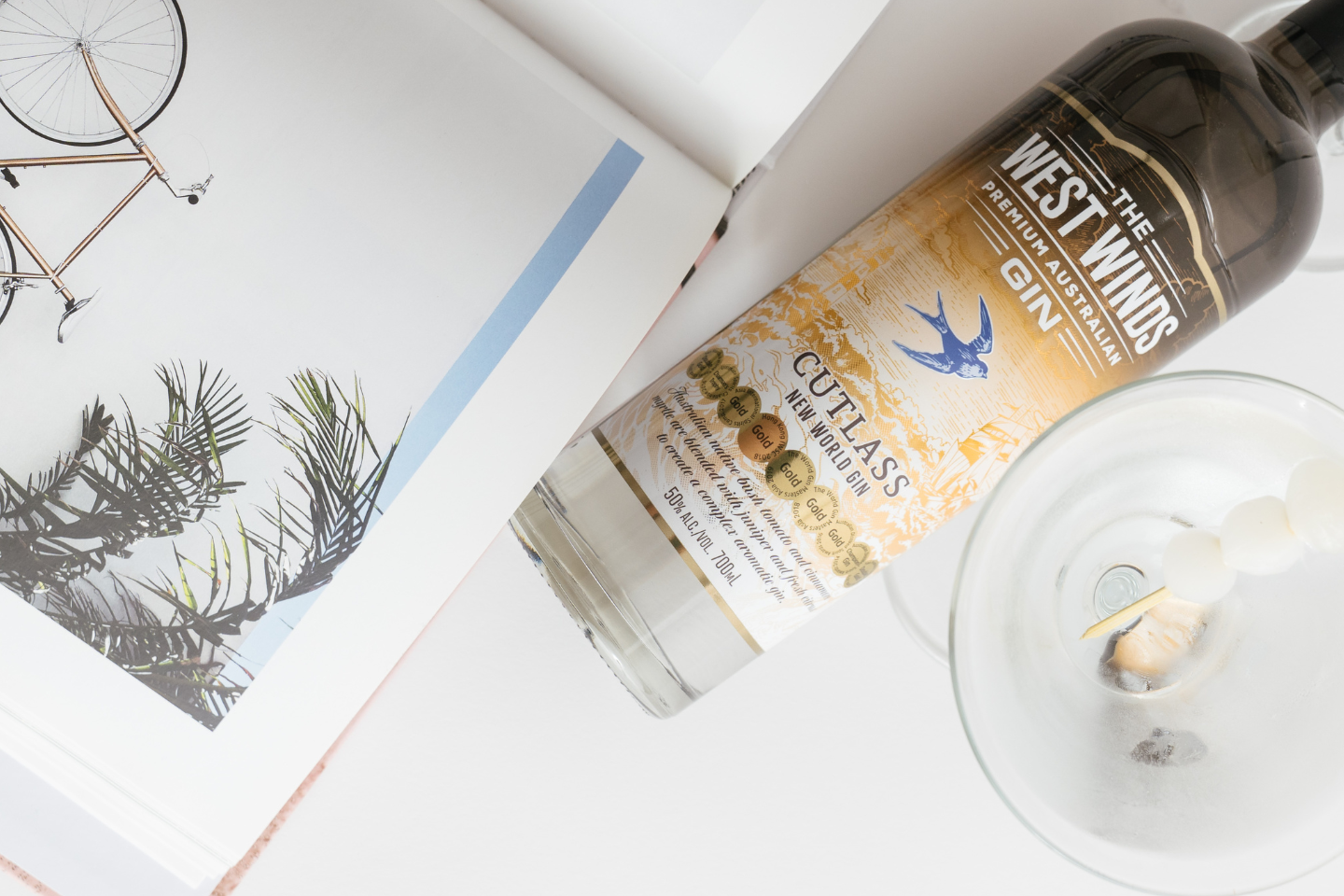

The original map we chartered for West Winds was to develop a range of gins which would highlight the unique native botanicals of Australia. Paul White, Ship’s Captain and Chief Navigator said the idea was to launch the business with two gins, both savoury in character; a 40% proof, incorporating toasted Australian wattle seed and a 50% proof, incorporating native Australian bush tomato.
“As we experimented with our distillation process during that first year, we were all at sea, learning and growing our skillset with a New Zealand Amphora PDA-1 test still before we undertook the process of scaling up to our 150-litre Arnold Holstein copper pot still,” said Paul.
“During this evolutionary journey we discovered that the creation of a world-class gin involves a mix of artistic vision, science, perseverance and, frankly, a good dose of sailor’s serendipity.”
As we set sail into the unchartered territory of Aussie botanicals gin, an obvious initial step demanded that the crew chose the correct base product, so they selected a beverage-grade neutral spirit made from Australian wheat as the starting point for development.
Most typical gins follow a simple flavour journey of citrus and juniper, followed by earth and warm spice last on the palate. These flavour profiles can be achieved in an infinite number of ways, and with a kaleidoscope of flavour profiles to choose from these days, some of the results can be a little, let’s say, off kilter.
Paul and the team decided to keep on course with their original idea.
“We stuck to our guns and with a high-grade distillate base and a pure water source, the selection and ratio of botanicals became the key to developing our world-class gin,” he said.
“We decided to start by using juniper and coriander seed as a base, and then to build up the profiles of our first two gins - The Cutlass and The Sabre - from there.”
Using a range of ingredients traditionally used in gin as well as a number of uniquely Australian ingredients that we thought would help them build the flavour profile they were looking for, the West Winds’ crew macerated and distilled each ingredient separately so that they could identify the characters that each botanical could bring to the final product.
“Tastings ensued. Many, many tastings, and wrong paths taken and taste combinations discarded,” recalled Paul.
“Where possible throughout the process we looked for Australian botanicals that would be a suitable substitute for traditional botanicals. The use of locally grown and native ingredients forms a core part of our story - our ‘terroir’ so to speak.”
Which fresh botanicals were chosen was key to the final profile of the gins West Winds currently distils.
“These botanicals and ingredients really help tell our story and locate our brand firmly in the heart of the South West of Western Australia,” said Ant Reynolds, Ship’s Rigger and Head Distiller.
“Local lemons and limes from Gingin in Western Australia are freshly peeled to provide a fresh zing in every glass and the addition of fresh coriander root brought the two gins to life in subtle and sophisticated ways.
“The use of both lemon and lime is considered fairly non-traditional but we felt they worked much better than other typical citrus mixes as lemon and lime work beautifully with the addition of lemon myrtle and cinnamon myrtle,” said Paul.
“It’s the myrtles which form a bridging gap between the citrus and spice notes in both The Sabre and The Cutlass.”
What’s your flavour?
Fresh coriander root and coriander seed form the predominate spice notes. The fresh coriander is a unique addition, and also provides aromatic grassy notes when used in conjunction with coriander seed.
Earthy tones are achieved using more ‘traditional’ botanicals like liquorice, angelica and allspice.
The smooth textural mouth feel is realised by the addition of Australian wattle seed to The Sabre, and Australian native bush tomato to The Cutlass. This is a really fascinating part of the West Winds’ flavour profile and deserves a little bit of a spotlight.
Part of the tomato family, there are over 100 species of Solanums (wild tomatoes) in Australia. However, only six are known to be edible. In the red, sandy deserts in central Australia the plants grow quickly after summer rains, mainly from dormant root stock which can last for many years between favourable seasons.
All the hard work was – almost instantly – worth it, said Paul
“We completed our development phase in November 2010 and then scaled up the recipe for our Arnold Holstein still. Just weeks after our first commercial runs we received a Double Gold medal for The Cutlass and a Gold medal for The Sabre at the 2011 San Francisco International Spirits Competition.”
Not one to weigh anchor and rest on his laurels, Paul and the West Winds team are constantly developing new products, from our spin on pink gin to a decadent plum-favoured gin – and scooping up awards along the way.
“We have since added our Navy-strength gin, The Broadside, to our portfolio along with a number of other small-batch gins and have installed a new 600-litre still, Pugwash, at our new distillery and tavern in Margaret River.”
